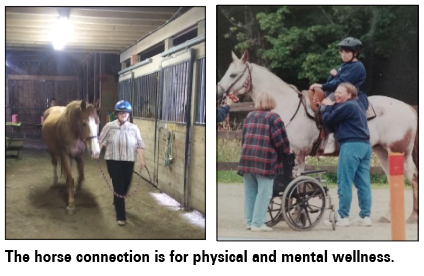A leaf’s life is brief but rife
The autumn of 2025 has been an unusually warm and dry one. For this writer, it has been unsettling for a number of reasons. The first is that it is an eerie reminder of the reality of climate change. Second, as anyone who has lived in Western New York long enough can tell you, there will be a natural equalizer; the law of averages tells us that these dry, hot, windless days will guarantee an especially nasty weather pattern some time in the not-too-distant future. There will be payback!
Despite the aberrant weather, the fall foliage has arrived, and this essay sets out to explore the nature of those ubiquitous leaves. Please pardon the quasi-science here (I’m out of my academic lane), and forgive my sentiment in conjuring up questionable analogies and literary allusions (which is my lane). Nevertheless, I hope to shed some new light on these infinite little patches that compose nature’s magnificent tapestry.
Maybe the best way to understand the life of a leaf is to appreciate its relationship with its Maker, the tree. Deciduous trees (like our maples, oaks, and beeches) and their leaves are codependent, which requires them to communicate needs. The tree knows that its existence depends on some kind of connection between the upper world (air and light) and the underworld (roots and dirt). Leaves serve as the receptacles of the energy sources from above, initiating a vital exchange through channels (phloem and xylem) beneath the bark of the tree. The tree gets food, the leaf water.
Leaves owe their existence (however ephemeral) to the creative nature of the tree. Through some complex magical process (which scientists would prefer to call primordia) the tree signals the formation of external organs, or bumps on its branches. These bumps (buds) are like a womb containing the “fetus” of a leaf, one whose connective chord – its meristem – holds the seed of new life, assuring the preservation of the tree.
Thus, tree gives life to leaf, and leaf to tree. Every part of the leaf is essential to the photosynthetic process – its petiole, lamina, stem, veins, and tip serve to absorb and help transform light into the food that sustains the tree’s life. But with shorter days and cooler temperatures, less food is produced. The tree then concentrates its energy inward, downward, gradually cutting off the lifeline to the leaf. Through this process, called senescence, pigments other than green – red, purple, orange – are exposed. Soon after, leaves are released from the branches where their decomposition enriches the ground.
It is fundamental in literature classes to view the seasons as symbols of the cycles of life. Spring is, of course, birth and the burgeoning of new life. Summer is a continuum of that growth, wherein life gains richer and more nuanced meaning and purpose. Fall is the final maturation, the climax, the colorful epiphany signaling transformation. And winter, alas, is the final resting place, where autumn leaves are buried. But, as Bette Midler once sang, “somewhere in the winter / beneath the bitter snow / lies the seed that with the sun’s love / in the spring becomes the rose.”
My yard is home to maple, walnut, cherry and mulberry trees. The leaves of each tree are shaped differently, and each performs its unique little dance in its fall from the grace of the tree. Once on the ground, however, they will be whipped and whirled willy-nilly by wayward winds, losing themselves within the multitudes.
In a way, humans are like leaves. We are the living parts of a greater whole – a family tree, an ethnicity, a race, a species. We are unique in our efforts to serve the greater good, and we find self worth and a sense of who we are as individuals within that whole. And, like late autumn leaves, we quake at the nature of our mortality.
Most importantly, whether it is a gentle breeze or a wild wind that brings us to our final resting place, we arrive there among a multitude of souls. In that place, the things that separated us before are blurred, and we sense a greater purpose in the understanding that we are the past and the future, here and now, and all leaves combine in making the earth more fertile.
Personally, I enjoy autumn, especially raking leaves. There is something about the repetitive scraping, flinging, fluffing and stuffing that is workman-like, purposeful, even graceful (if no one is looking!). It is good exercise if you do it right. And I believe it is superior in every way to the modern alternative – the mighty ear-blasting leaf blower! And BTW, the only leaf blower I approve of is the wind!
Writer and musician Pete Howard lives in Dunkirk. Send comments to odyssmusic20@gmail.com





